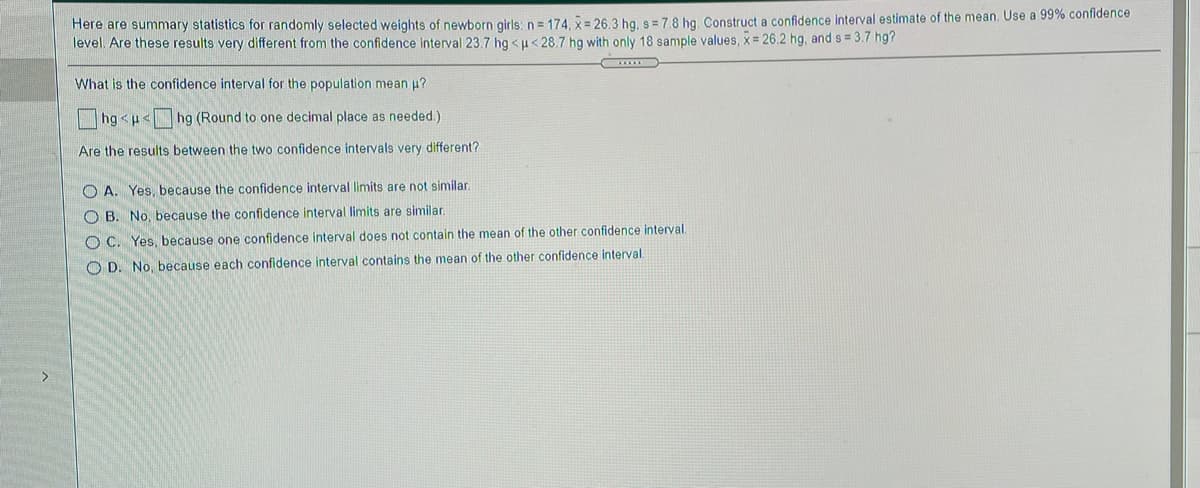Here are summary statistics for randomly selected weights of newborn girls: n = 174, x= 26.3 hg, s = 7.8 hg. Construct a confidence interval estimate of the mean. Use a 99% confidence level. Are these results very different from the confidence interval 23.7 hg < u< 28.7 hg with only 18 sample values, x= 26.2 hg, and s = 3.7 hg? What is the confidence interval for the population mean p? |hg
Here are summary statistics for randomly selected weights of newborn girls: n = 174, x= 26.3 hg, s = 7.8 hg. Construct a confidence interval estimate of the mean. Use a 99% confidence level. Are these results very different from the confidence interval 23.7 hg < u< 28.7 hg with only 18 sample values, x= 26.2 hg, and s = 3.7 hg? What is the confidence interval for the population mean p? |hg
Glencoe Algebra 1, Student Edition, 9780079039897, 0079039898, 2018
18th Edition
ISBN:9780079039897
Author:Carter
Publisher:Carter
Chapter10: Statistics
Section10.4: Distributions Of Data
Problem 19PFA
Related questions
Question

Transcribed Image Text:Here are summary statistics for randomly selected weights of newborn girls: n= 174, x= 26.3 hg, s = 7.8 hg. Construct a confidence interval estimate of the mean. Use a 99% confidence
level. Are these results very different from the confidence interval 23.7 hg <u< 28.7 hg with only 18 sample values, x= 26.2 hg, and s = 3.7 hg?
What is the confidence interval for the population mean u?
hg <p<hg (Round to one decimal place as needed.)
Are the results between the two confidence intervals very different?
O A. Yes, because the confidence interval limits are not similar.
O B. No, because the confidence interval limits are similar.
O C. Yes, because one confidence interval does not contain the mean of the other confidence interval,
O D. No, because each confidence interval contains the mean of the other confidence interval.
Expert Solution
This question has been solved!
Explore an expertly crafted, step-by-step solution for a thorough understanding of key concepts.
This is a popular solution!
Trending now
This is a popular solution!
Step by step
Solved in 2 steps with 2 images

Recommended textbooks for you

Glencoe Algebra 1, Student Edition, 9780079039897…
Algebra
ISBN:
9780079039897
Author:
Carter
Publisher:
McGraw Hill

Glencoe Algebra 1, Student Edition, 9780079039897…
Algebra
ISBN:
9780079039897
Author:
Carter
Publisher:
McGraw Hill